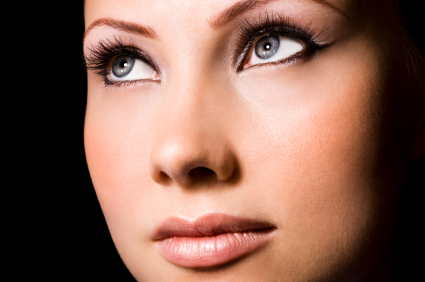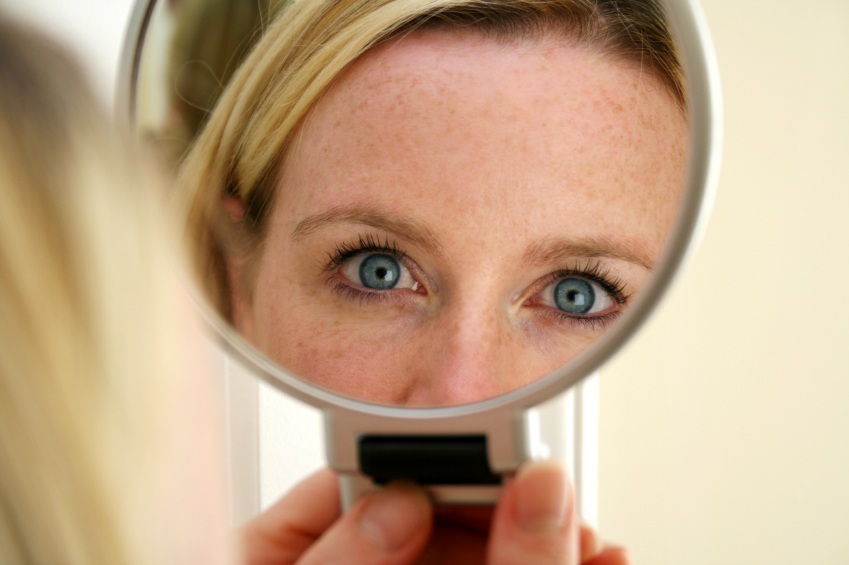Eyelid Surgery (Blepharoplasty)
In their late 30s and into the 40s, many individuals begin to notice excess, “crepey” skin as well as “bags” or extra fat deposits in and/or around the eyelids. This can create a more tired or exhausted appearance in the focal point of the face. Fortunately, these aesthetic concerns can often be resolved via a common cosmetic treatment called eyelid surgery.
The information below offers details on what you can expect from eyelid surgery. If you have questions, or if you would like to schedule a consultation, please contact Boynton Plastic Surgery today.
Eyelid Surgery At a Glance
- Potential Benefits: Eyelid surgery, also known as an “eyelid lift” or “blepharoplasty,” can provide remarkable aesthetic rejuvenation to an area of the face which is often the first to display signs of aging and fatigue. This treatment can reduce signs of puffiness and under-eye bags, eliminate excess skin and tighten the remainder in the upper eyelid areas, and generally create a smoother, more youthful, and rested look.
- Procedure: Although the eyelid procedure techniques utilized will vary depending on each patient’s unique needs, Dr. Boynton is often able to perform this treatment here in our office using local anesthesia and an oral medication that helps patients feel relaxed during treatment. This approach can help reduce recovery time and make the treatment process more convenient for patients. Additionally, the incisions for eyelid surgery can be made in very discreet locations, making residual scarring virtually unnoticeable by others.
- Recovery: Most individuals are able to resume normal daily routines about five to seven days following eyelid surgery. Some bruising in the eyelid areas can be expected for approximately one week. Exercise and other strenuous activities should be avoided for a minimum of two weeks after the procedure, or as otherwise recommended by Dr. Boynton.
- Cost: The cost of upper eyelid surgery starts in the $5,000 and upwards range; the cost of lower eyelid surgery starts in the $6,000 and upwards range; and the cost for a combination of the two treatments is in the $8,500 and upwards range. The total price will be based on the complexity of the treatment and other individual factors associated with the treatment plan and each patient’s needs; therefore, the cost of eyelid surgery varies among individuals.
- Surgeon: Dr. James F. Boynton is a board-certified plastic surgeon and has been honored with multiple “Top Doctor” recognitions throughout his career. Along with many other popular plastic surgery options at our practice, Dr. Boynton has placed an emphasis on utilizing state-of-the-art techniques for eyelid surgery that can help make the procedure more convenient and effective for patients. His goal is to produce outcomes that successfully rejuvenate this prominent area of the face without looking unnatural or “overdone.”
- What Is Blepharoplasty?
- Benefits of Eyelid Surgery
- Office-Based Procedure Vs. Outpatient Surgery
- Dr. Boynton’s Modern Approach to Blepharoplasty
- Eyelid Surgery Candidates
- Eyelid Surgery Procedure
- Eyelid Surgery Recovery
- Eyelid Surgery Cost
- Asian Eyelid Surgery
- Eyelid Lift Without Surgery
- Complementary Procedures
What Is Blepharoplasty?
Also known as blepharoplasty or eyelid lift, eyelid surgery is a popular procedure performed by our board-certified plastic surgeon, Dr. James F. Boynton. Many times, this can be the first surgical treatment a patient decides on for their face due to the dramatic effect the eyes can have on one’s entire facial aesthetic. By customizing blepharoplasty to meet the specific needs and goals of each individual, Dr. Boynton is able to help patients achieve a refreshed, more youthful appearance with exceptionally natural-looking results.

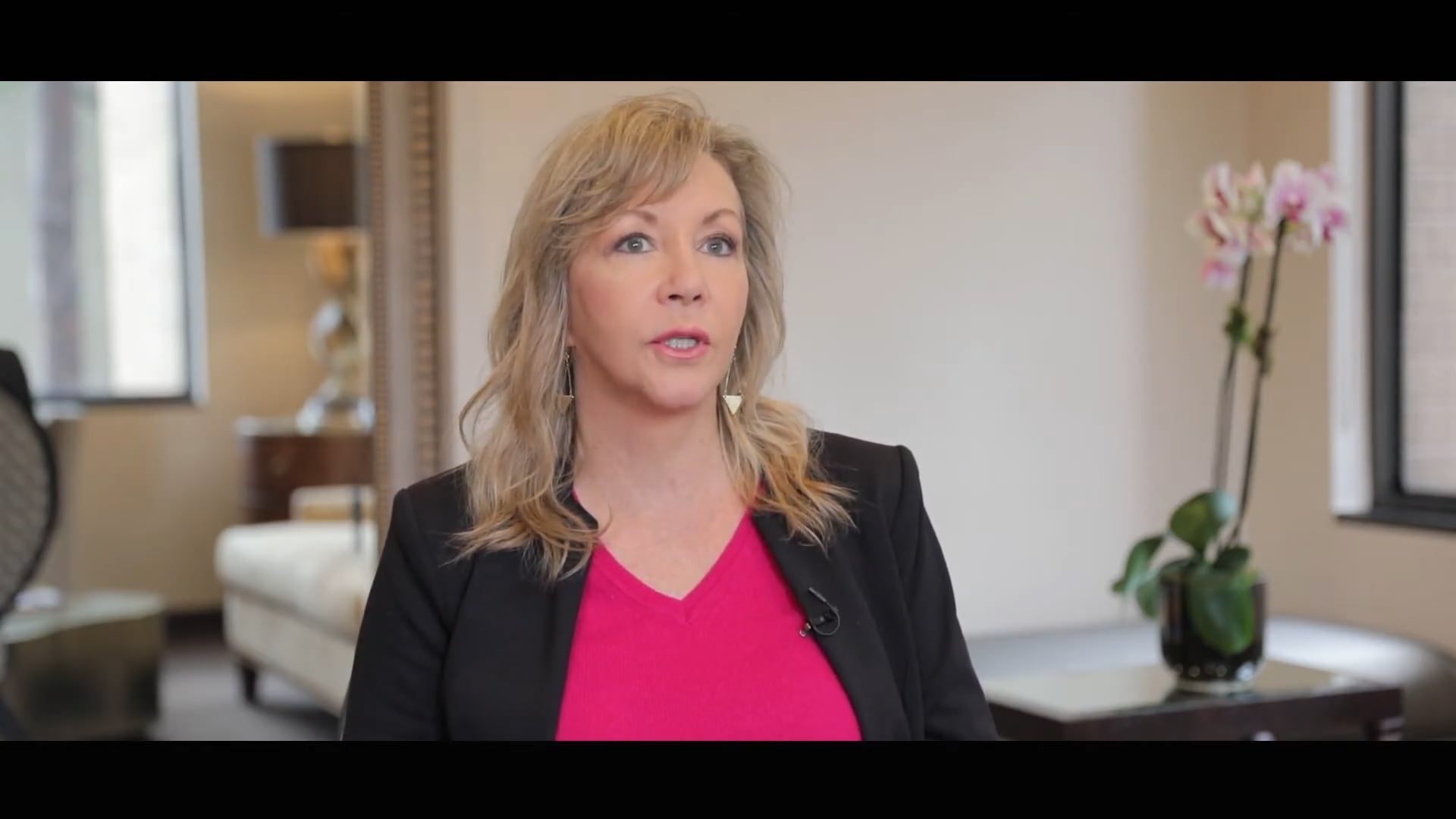
What Are the Benefits of Eyelid Surgery?
One of the major advantages of eyelid surgery is its ability to provide such a significant rejuvenation to a facial area that is often prominently susceptible to signs of aging and exhaustion. Depending on your unique needs and goals, the potential benefits of this procedure include:
- Reduction or relocation of excess fat around the eyes to create a smoother appearance
- Reduction of wrinkles around the eyes
- Diminished signs of bagginess, puffiness, or dark circles under the eyes
- Elimination of excess skin, followed by the tightening of remaining skin, in the upper eyelid regions to create a more refreshed look
- Elimination of excess, overhanging upper eyelid skin that may be causing a vision obstruction
Eyelid surgery from an experienced plastic surgeon such as Dr. Boynton can help you beautifully renew the skin surrounding your eyes with natural-looking results.
Office-Based Procedure Vs. Outpatient Surgery
Traditionally, blepharoplasty has been done under general anesthesia in either an accredited outpatient surgery center or a hospital. Dr. Boynton performs a significant amount of his eyelid surgery treatments in the office. Our practice includes an advanced surgical suite designed to provide patients with safe and effective treatment. Office-based procedures are done with local anesthesia and usually a mild relaxing medication that patients take orally. Many patients like to have procedures performed in the office without the need for general anesthesia, which can often result in less nausea following the treatment. Other patients prefer to be “out” and have this treatment done under general anesthesia. One other advantage of office-based eyelid surgery is that it typically results in a lower overall treatment cost since it is not performed in an outpatient surgical facility and does not utilize general anesthesia. Dr. Boynton can talk with you about your preferences during the initial consultation and answer any questions you may have.
Dr. Boynton’s Modern Approach to Blepharoplasty
Eyelid surgery has been around since the 1960s. The procedure has traditionally involved removing excess skin (crepey skin), muscle, and fat deposits from around the upper and lower eyelids. However, the traditions and techniques have changed over the years as our understanding of facial aging in general has vastly advanced. Most plastic surgeons who performed eyelid surgery in the 70s, 80s, and 90s often took out too much fat—especially in the upper lids. This can lead to a “hollowing out” (and even skeletal appearance) around the upper lids, where too much upper lid skin can be seen (sometimes called “bedroom eyes”).
As knowledge of aging in the face has advanced in the last 10–15 years, we now know that “fat is our friend.” Using careful analysis, as well as going back and looking at photographs of patients at an earlier time point, one can see how a “full” upper lid is considered “attractive” and “youthful.” Dr. Boynton is careful to remove as little fat as possible during eyelid surgery, and he even incorporates nano and micro fat transfer into the procedure when needed to achieve improved results. These advanced techniques often enable both upper and lower blepharoplasty treatments to be performed in the comfort of the office without the need for general anesthesia.
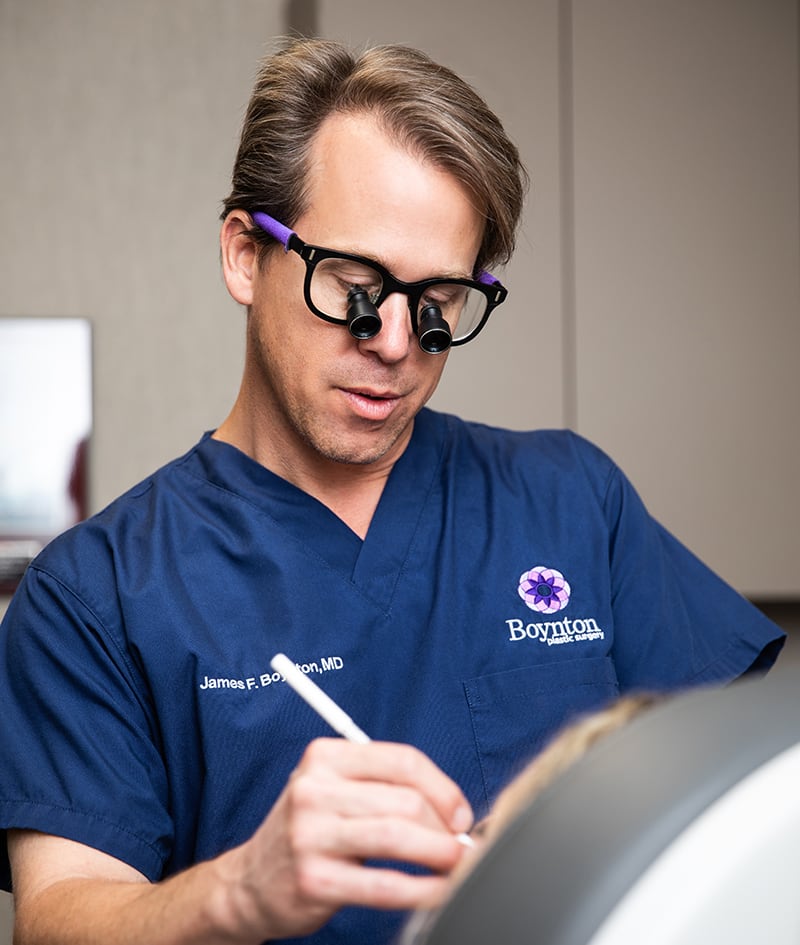
“I recently had upper eyelids done under the artistic, surgical hands of Dr. James Boynton. My consultation was informative & all of my questions were answered prior to surgery. His office staff was amazing! I had a great experience with a quick recovery. I would highly recommend Dr. Boynton’s services to anyone looking for a great plastic surgeon”
Am I a Candidate for Eyelid Surgery?
Ideal candidates for eyelid surgery are typically those who have signs of wrinkles and exhaustion, puffiness or bagginess, and/or excess fat and skin deposits in eyelid areas. Patients with hollowed tear troughs or skin that is drooping into their field of vision may also be good candidates for this procedure. Individuals considering eyelid surgery must be in relatively good overall health and have reasonable expectations in terms of the potential results of the procedure. It is also important to note that, in some cases, a patient’s specific concerns may be better addressed with a brow lift, or a combination of eyelid surgery and brow lift surgery. This is usually necessary when one or more of the aesthetic issues is caused by a low positioning of the brow. Dr. Boynton will perform a comprehensive evaluation of the upper face and talk with you about the option that can provide the best cosmetic benefit in accordance with your goals.
Once Dr. Boynton determines your candidacy for eyelid surgery, he will create a customized treatment plan designed to meet your needs with the best possible results.
How Is the Eyelid Surgery Procedure Performed?
Dr. Boynton’s approach to eyelid surgery accounts for anatomical gender and demographic differences to achieve natural-looking results. In general, incisions are typically made in the crease of the upper eyelid and just below the lashes of the lower eyelids, leaving scars that are virtually undetectable. Sometimes the lower eyelid can be approached through the inside of the lower lid if bulging fat is to be removed. This is referred to as transconjunctival lower lid blepharoplasty. Additionally, some patients have “looseness” to the lower eyelid skin that requires tightening as well. Finally, the upper eyelid can also become ptotic or “droopy,” requiring correction. Each of Dr. Boynton’s blepharoplasty techniques is highlighted below.
Upper Eyelid Surgery
For at least the last seven to eight years, Dr. Boynton has changed the way he approaches upper lid blepharoplasty. He typically does not remove muscle unless it is still necessary in some cases, nor does he remove much, if any, fat—sometimes just a small amount will be extracted from the medial compartment (subtle bulge closest to the nose). Dr. Boynton believes this approach has really improved eyelid aesthetics, and as an added benefit, it often makes the procedure very easy and manageable to perform using just local anesthesia in the office.
Dr. Boynton also performs nano and micro fat transfer to the upper lid and supraorbital rim (bone above the eyelid) to correct the “excess upper eyelid show.” Along with enhancing the upper lids, this concept can markedly improve aesthetics in the lower lids and infraorbital region below the eyelids. This small-particle fat transfer can be done in-office and can create significant improvements and rejuvenation about the entire eye.
Lower Eyelid Surgery
Depending on the patient’s needs, there are many ways to perform lower lid surgery, which is largely considered one of the most challenging areas in plastic surgery. Some plastic surgeons approach the lower lid “from the front” and remove skin, muscle, and fat, as well as use a supporting stitch called a “canthopexy” to hold up the lower eyelid. This is necessary in certain instances, but in Dr. Boynton’s experience, this approach sometimes causes more issues, shape changes, and a longer recovery process. In many cases, he prefers to approach the lower lid from the inside.
When a patient has “bags” and excess eyelid fat—which is much more of an issue in the lower lids rather than the upper lids—Dr. Boynton performs lower eyelid surgery oftentimes from inside the lid using a “transconjunctival” approach. He feels this is a great way to remove the extra fat without any outside incision, and he has found the healing to often be faster. In rare cases, a canthopexy suture may be needed, which can easily be done in the office under just local anesthesia. Other times, he does a standard “subciliary” approach to the lower lids that leaves a very well-disguised incision just below the lash line. This allows him to remove loose skin as well as muscle and fat, and also “redrape” the skin and muscle to rejuvenate the area. Some patients are still hollow in this area and may still require some fat or filler injected in the “tear trough” area.
Sometimes just a small bit of skin needs to be removed from the lower lids, which can be performed with a “pinch blepharoplasty” technique using a well concealed incision just below the lash line. This type of technique can be done in conjunction with the transconjunctival approach when excess fat needs to be removed from the lower lids as well. Nano and micro fat transfer techniques have also markedly improved lower eyelid rejuvenation. If patients have hollow creases—called “tear troughs”—rather than “bags” under the eyes, Dr. Boynton typically starts with fillers like Restylane®, as the dark (sometimes even purple) discoloration in this area cannot usually be resolved with creams and skin care. Nano and micro fat transfer to this area are also very beneficial—the particles of fat can help “rejuvenate” the region by restoring volume without creating a “lumpy” appearance, as well as impart improvements to the skin and discoloration with a stem cell effect. Fat transfer to the lower eyelids can either be done in combination with the rest of the lower eyelid enhancements or separately in a staged fashion.
There are also cases, especially in younger patients with earlier signs of aging, that do very well with lower eyelid laser resurfacing only. Typically, this is performed with a laser resurfacing procedure here in the office. Sometimes, chemical peels such as TCA can also be an adjunct treatment, also done in the office.
What Is Eyelid Surgery Recovery Like?
Performed as an outpatient procedure, recovery from eyelid surgery is generally quick with little pain. Patients often use drops for the first week and may experience some bruising that resolves mostly within a week or so. Stitches are removed after four days, and patients can usually return to work and other non-strenuous activities after five to seven days. Exercise should be avoided for at least two weeks to allow ample time for healing.
How Much Does Eyelid Surgery Cost?
Like all of the procedures available here at our practice, eyelid surgery is completely customized to each patient’s unique needs; therefore, the total price of the procedure is not the same for everyone. Upper eyelid surgery prices often start in the $5,000 range and upwards depending on the complexity of the treatment, lower eyelid surgery in the $6,000 range and upwards (again, depending on complexity), and the cost of both upper and lower eyelid surgery combined typically starts in the range of $8,500 and upwards. The surgeon’s fee, the complexity of the procedure, whether the treatment involves upper eyelid surgery, lower eyelid surgery, or a combination of the two, surgical facility and anesthesia fees, and other associated expenses will be taken into account to create the total price. The cost will also be dependent on whether eyelid surgery is performed as part of a more comprehensive treatment plan that includes a brow lift or other procedures.
Dr. Boynton believes it is very important that our patients receive thorough price estimates on procedures right from the outset so they will know what to expect. Once your treatment plan has been developed during the consultation, a member of our team will put together a list of all potential expenses associated with the surgery and present you with a total cost estimate. Boynton Plastic Surgery accepts a wide range of payment methods and we work with CareCredit®, a leading plastic surgery financing company that offers a variety of flexible monthly payment options for qualified applicants. We will be happy to assist you with finding the way to pay for your procedure that makes the most sense for your budget. Also, it should be noted that office-based eyelid surgery can be a very safe way to perform this procedure while limiting the cost.
Asian Blepharoplasty
Sometimes referred to as “double eyelid surgery,” Asian blepharoplasty is a special kind of eyelid surgery that can produce an additional fold in the area of skin above the upper eyelashes. Some individuals of Asian descent who have what’s known as a “single fold” in the upper eyelids would like to attain a “double fold,” which can give the eyes a larger appearance. If you are interested in Asian eyelid surgery, Dr. Boynton can discuss your ultimate goals with you at the initial consultation and answer any questions you may have about this procedure.
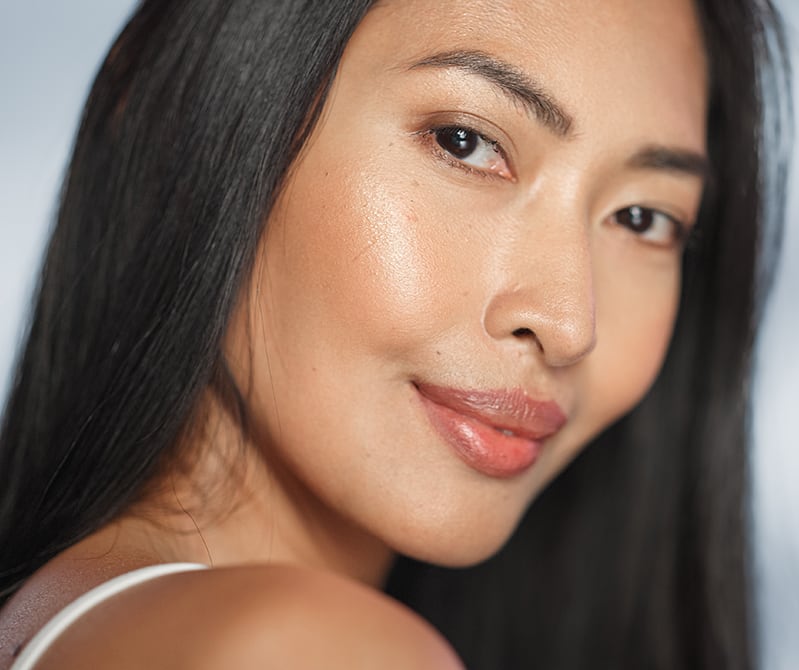
Is Eyelid Lift Without Surgery Possible?
The rejuvenative, long-lasting effects made possible by eyelid lift surgery simply cannot be equalled by any non-surgical treatment. That said, there are non-surgical options available that can address, to a certain degree, signs of aging and stress that may appear in areas surrounding the eyelids. Non-surgical treatments will not be able to significantly improve severe aesthetic concerns in these areas or create results that last as long as those that can be acquired with surgical intervention; however, patients who have milder signs of aging in these areas, those who may not be candidates for eyelid lift surgery, and those who wish to avoid major surgery may benefit from these options. An injectable treatment such as fat grafting can be useful for improving hollows, discoloration, and dark circles in the under-eye regions. Other injectable procedures can also be utilized in eyelid areas and surrounding regions. These include the popular BOTOX® Cosmetic to temporarily smooth away crow’s feet and furrows between the brows, as well as cosmetic dermal fillers such as Restylane®, JUVÉDERM®, and others that can improve signs of hollow tear troughs or add volume to specific facial areas. Dr. Boynton will be happy to talk with you about options that may be appropriate for your goals during the initial consultation.
What Are Some of the Procedures That Can Complement Eyelid Surgery?
While eyelid surgery offers remarkable and long-lasting rejuvenating effects on its own, it can also be performed with other advanced enhancement procedures for more comprehensive cosmetic results. A surgical procedure such as brow lift is often combined with eyelid surgery, which can be done in the office as well, to improve brow positioning, diminish signs of creases along the forehead, reduce the appearance of frown lines, and further enhance the upper areas of the face. For patients who would like to address the mid-facial and lower facial/upper neck areas, a facelift added to the eyelid surgery treatment plan may be an ideal option. Fat injections, BOTOX® Cosmetic, and injectable dermal fillers are some of the more popular non-surgical procedures patients add on to their eyelid surgery treatment program, as these treatments can smooth away signs of wrinkles or build volume in other facial areas to complement and enhance the results of eyelid surgery. Dr. Boynton offers a wide range of both surgical and non-surgical options that can be part of your treatment plan. He can answer any questions you may have about additional procedures that may be right for your ultimate goals.
Schedule an Eyelid Surgery Consultation
If you would like to meet with our plastic surgeon to discuss all aspects of eyelid surgery and how this procedure may benefit you, please contact Dr. Boynton. He will be happy to answer your questions, discuss your goals, and develop a personalized treatment plan to meet your needs.




